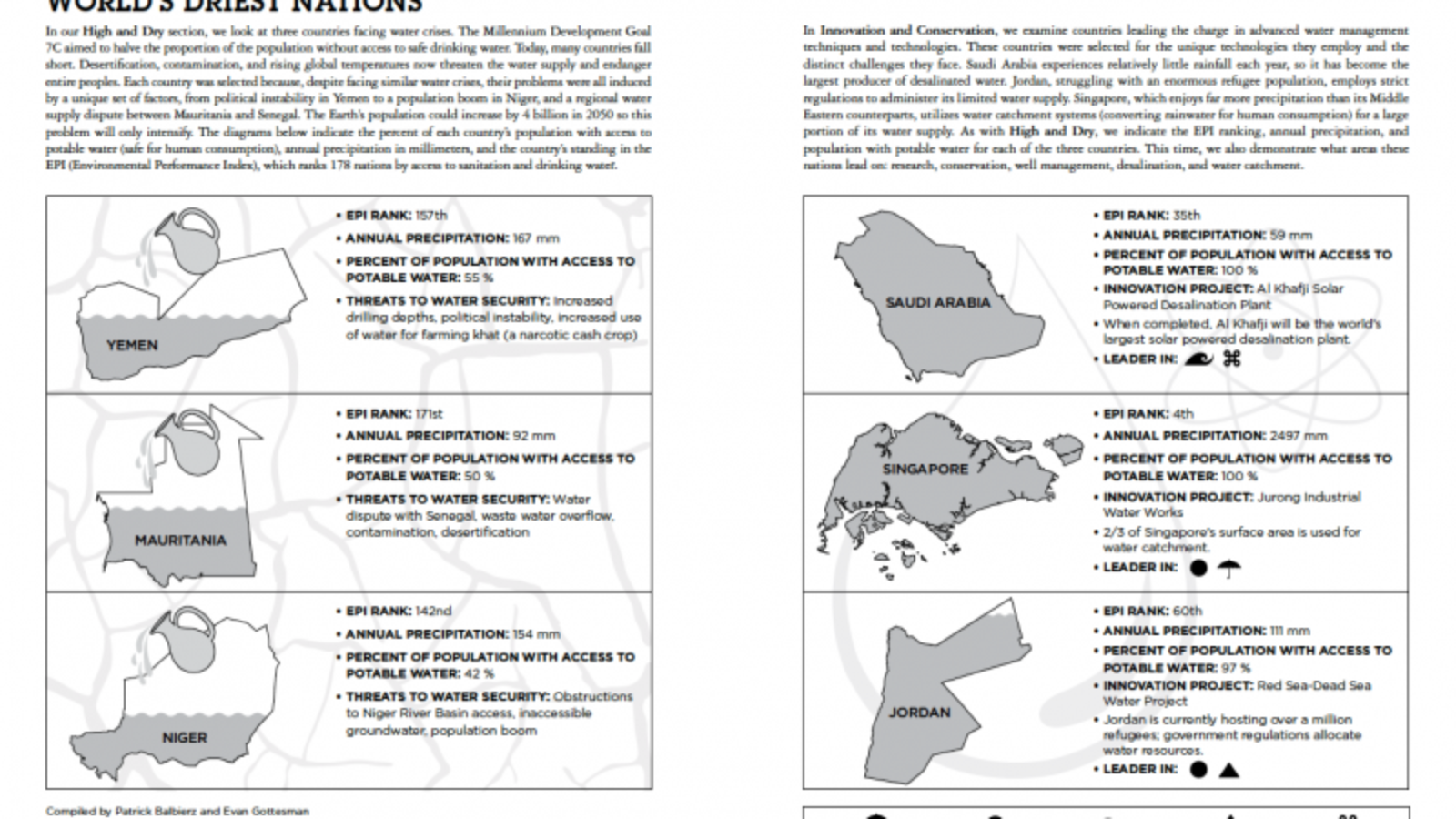(Subscribe to World Policy Journal here)
From the Summer 2015 Issue "Climate's Cliff"
Click image to expand or download PDF.
In our High and Dry section, we look at three countries facing water crises. The Millennium Development Goal 7C aimed to halve the proportion of the population without access to safe drinking water. Today, many countries fall short. Desertification, contamination, and rising global temperatures now threaten the water supply and endanger entire peoples. Each country was selected because, despite facing similar water crises, their problems were all induced by a unique set of factors, from political instability in Yemen to a population boom in Niger, and a regional water supply dispute between Mauritania and Senegal. The Earth’s population could increase by 4 billion in 2050 so this problem will only intensify. The diagrams below indicate the percent of each country’s population with access to potable water (safe for human consumption), annual precipitation in millimeters, and the country’s standing in the EPI (Environmental Performance Index), which ranks 178 nations by access to sanitation and drinking water.
In Innovation and Conservation, we examine countries leading the charge in advanced water management techniques and technologies. These countries were selected for the unique technologies they employ and the distinct challenges they face. Saudi Arabia experiences relatively little rainfall each year, so it has become the largest producer of desalinated water. Jordan, struggling with an enormous refugee population, employs strict regulations to administer its limited water supply. Singapore, which enjoys far more precipitation than its Middle Eastern counterparts, utilizes water catchment systems (converting rainwater for human consumption) for a large portion of its water supply. As with High and Dry, we indicate the EPI ranking, annual precipitation, and population with potable water for each of the three countries. This time, we also demonstrate what areas these nations lead on: research, conservation, well management, desalination, and water catchment.
*****
*****
Compiled by Patrick Balbierz and Evan Gottesman
Designed by Meehyun Nam-Thompson
Sources: World Bank Data, African Minister's Council on Water, and UN Water

